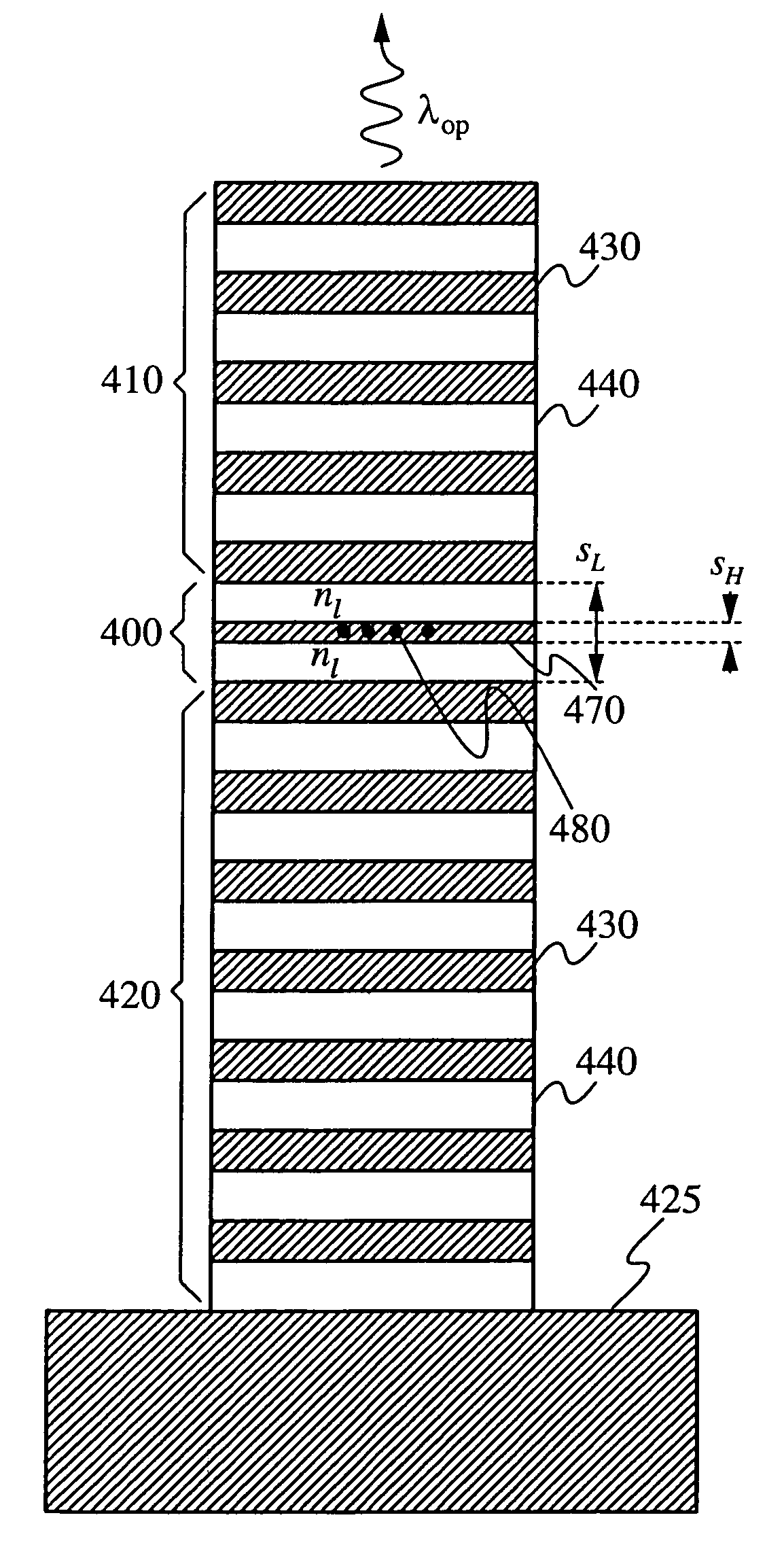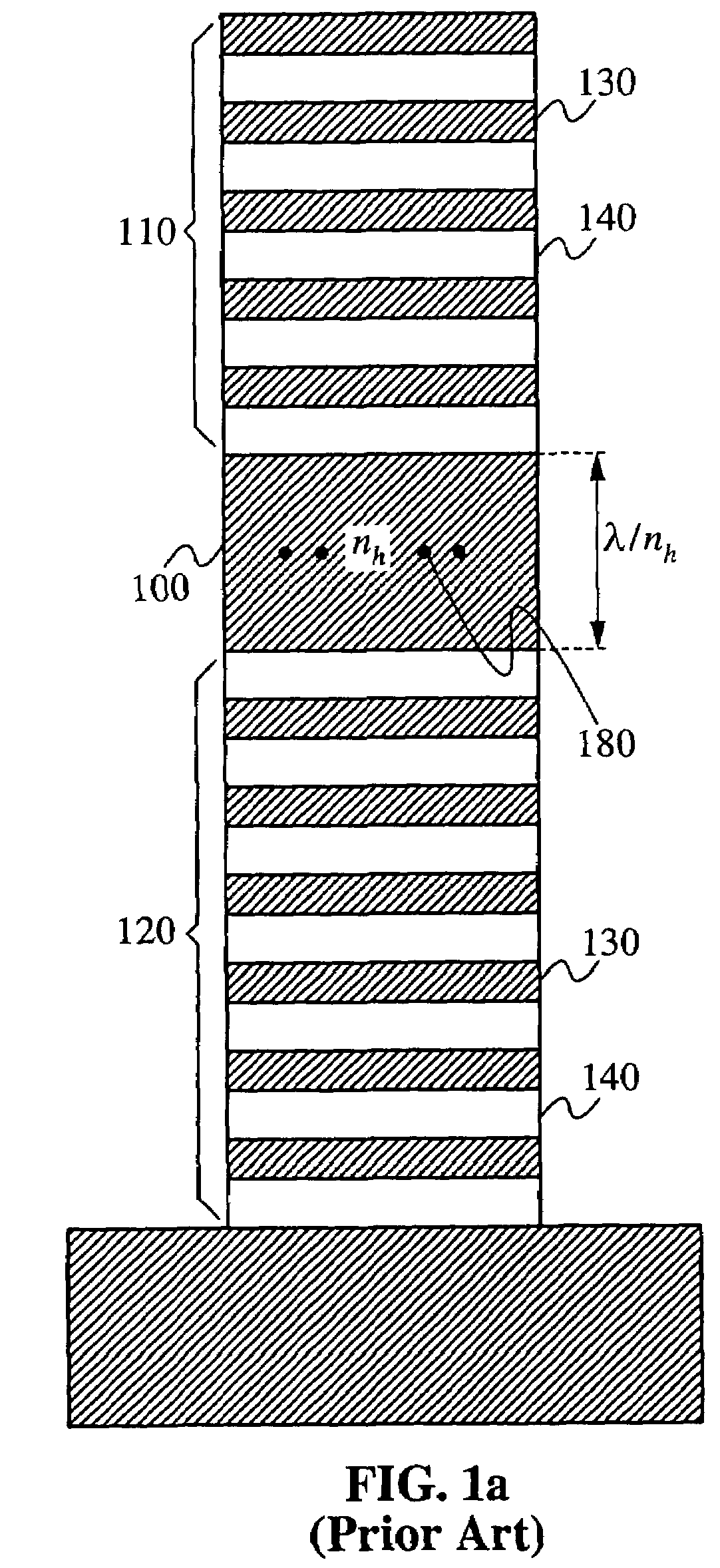Half-wavelength micropost microcavity with electric field maximum in the high-refractive-index material
a micropost microcavity and high-refractive index material technology, applied in the field of optical devices and components, can solve the problems of large volume v, inconvenient design, and inability to relocate the active layer to the field maximum
- Summary
- Abstract
- Description
- Claims
- Application Information
AI Technical Summary
Benefits of technology
Problems solved by technology
Method used
Image
Examples
Embodiment Construction
[0019]One embodiment of a micropost microcavity according to the invention is shown in FIG. 4a. The device of finite diameter is designed to operate at a predetermined operational wavelength, λop400 is sandwiched between two dielectric mirrors 410 and 420, and the device may be fabricated on a substrate layer 425 using conventional fabrication processes. Dielectric mirrors 410, 420 are distributed-Bragg-reflectors (DBRs), constructed by stacking alternating high-refractive index layers 430 and low-refractive index layers 440 on top of each other. The low index layers 440 are composed of a material having a refractive index nl, while the high index layers 430 are composed of a material having a refractive index nh, where nlh. The alternating low index and high index layers have alternating quarter-wave thicknesses λ / 4nl and λ / 4nh, respectively. The mirrors are optimized for the planar case rather than for the actual operating wavelength.
[0020]As is well known in the art, many materia...
PUM
 Login to View More
Login to View More Abstract
Description
Claims
Application Information
 Login to View More
Login to View More - R&D
- Intellectual Property
- Life Sciences
- Materials
- Tech Scout
- Unparalleled Data Quality
- Higher Quality Content
- 60% Fewer Hallucinations
Browse by: Latest US Patents, China's latest patents, Technical Efficacy Thesaurus, Application Domain, Technology Topic, Popular Technical Reports.
© 2025 PatSnap. All rights reserved.Legal|Privacy policy|Modern Slavery Act Transparency Statement|Sitemap|About US| Contact US: help@patsnap.com



